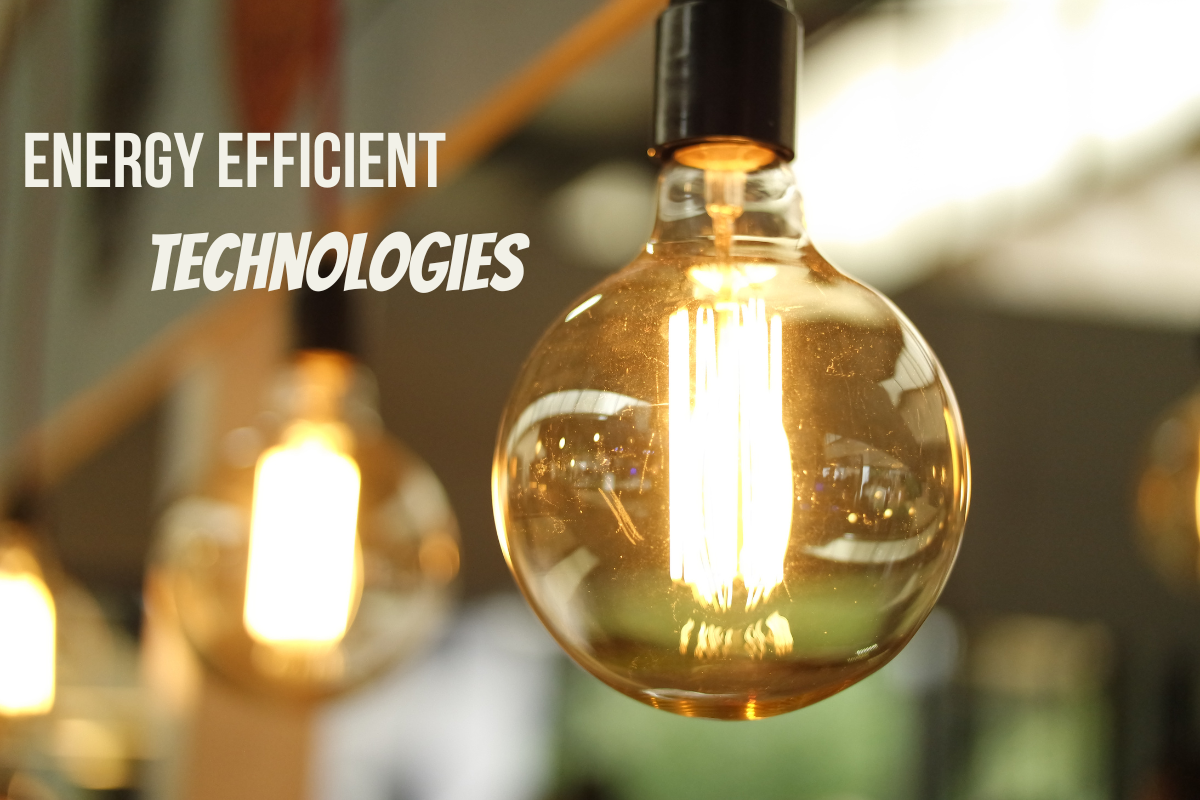Introduction
Hook: The search for the capability to achieve energy efficiency in its respective fight against climate change and cost reduction.
Role of Technology: Start to bring out how, through technological development, more practicable energy efficiency is made and disseminated.
The goal of the blog is to brief about three major themes that will be discussed in this paper: smart grids, LED lighting, and energy-efficient home appliances and buildings.
1. Smart Grids: Optimizing Energy Distribution
Introduction to Smart Grids:
What Is a Smart Grid? Smart grids are an advanced form of energy distribution wherein technology governs distribution to make the process of carrying electricity more efficient.
Why Do They Matter? This explains how smart grids will improve energy efficiency. Improved efficiency shall be achieved mainly in reduced loss of energy and management of demand, and reduced intensity of fossil fuel in use in the context of renewable energy.
Key Smart Grid Components
Advanced Metering Infrastructure: How smart meters provide real-time data on energy consumption and, through this mechanism, help in using energy most efficiently.
Demand Response Systems: Explain how such systems help consumers to make the needed correspondences to the amount of energy required in case of peak electricity demand to ensure that there is little or no stress on the grids for effective performance.
Integration of Renewable Energy: In the process, point out how smart grids easily integrate the sources of renewable energy, such as solar and wind power, making distribution more sustainable.
Advantages of Smart Grids
Enhanced Reliability: Further made it clear that it is through the smart grids that interruptions are avoided through the proper restoration of electricity supply with the least delays.
Financial Savings: Elaborate on how optimized energy distribution saves money by reducing the final cost paid by consumers and utilities.
Environmental Impact: Further elaborate on how carbon emissions among other hazards have been reduced because of efficient utilization of energy and greater incorporation of renewables.
Challenges and Prospects
Cost of Infrastructure: There is a high expenditure in upgrading the existing grids into smart grids.
Cybersecurity issues : There will be a requisite to implement strong security measures to counter grid weaknesses to cyber attacks.
The Future of Smart Grids : Discuss possible future developments and the scope of their widespread adoption.
2. LED Lighting: Energy Efficient Lighting
Introduction :
The Evolution of Lighting
Traditional lighting and LED Comparison of incandescent, fluorescent and LED types which shows the inefficiency that the older technologies carry.
Rise of LED Technology : Mention how modern technological breakthroughs have helped LED lighting become more affordable and available.
Benefits of LED Lighting
In real terms, the LED lights use about 75% less power than incandescent bulbs. This means one can save a lot of energy. Long Lifespan: LED light bulbs are extremely long-lasting. Sometimes they can last up to 25 times longer than their conventional counterparts. E.g., Applications LED
Residential Use: How one employs LED lighting in residences-whether in general lighting, decorative lighting, or intelligent lighting systems.
Commercial and Industrial Use: Elaborate on the use of LED lighting in the commercial world, factories, streetlights, and traffic signals, among others.
Innovations in LED Technology: For example, tunable LED lighting to mimic natural light and help human well-being.
Challenges in Adoption:
First Application: Tell them that they do have greater upfront costs than the rest of the conventional lightings, but they lead to savings over time.
Disposal and Recycling: state that it is environmental friendly for disposal and recycling and yields no harm to the environment.
3. Energy-Efficient Home Appliances and Buildings (300-350 words)
Energy Star Appliances
What Are Energy Star Appliances? Describe the appliances that are usually certified by Energy Star and what are they supposed to perform while they use minimal energy without performance compromise.
Examples of Energy-Efficient Appliances: Discuss examples-energy-efficient refrigerators, washing machines, and HVAC systems-what these examples mean in reduction in household energy use.
Cost Savings: Explain the savings that would be achieved on the energy bills by using these appliances.
Green Building Standards:
Introduction to Green Building: Green building is one kind of building construction wherein the designing and construction work is primarily done in a manner so as to conserve energy.
International Acclamation: How in your opinion do green architecture and smart homes fuel the development trend?
Green Home Technologies: A few examples targeted toward green buildings that have the edge of designs with innovation and translate into immense energy.
LEED and BREEAM Certification: LEED and BREEAM are two international mechanisms to standardize buildings with energy standards.
Discuss how IoT and smart home systems can be used towards optimum energy use in automatically monitoring and controlling the following, according to occupancy and usage patterns. Lighting; heating and cooling controls. Features of smart thermostats and energy management are usable to lower energy use.
Retrofitting Existing Buildings:
Necessity of Retrofitting: It deals with the making of old building stock, which was built with hardly any consideration towards energy conservation, much more energy-efficient.
Non-Energy-Efficient Retrofitting: Retrofit measures can involve insulating a building, replacing windows, and changing the heating system of a site into an energy-efficient HVAC system.
Challenges and Opportunities
Cost Barriers: The discussion on the cost to upgrade to energy-efficient appliances and retrofitting of buildings would include the place of government incentives and rebates to enable affordability for such investments.
Education and Awareness: More awareness and education needs to be developed in the area of the energy-efficient technologies to spur their adoption.
Conclusion
Summary of Key Points: Energy-efficient technologies are therefore important for reducing energy consumption to save costs and prevent damage to the environment.
The Future of Energy Efficiency: Speculate on future advances and possibilities of even more enegry savings.
Call to Action: Likely the most effective appeal for readers to make use of energy-efficient technologies at home and in the office, supported by policy for an even better claim to energy savings.
